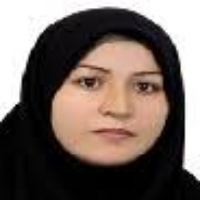A Comparative S tudy of the Usage of Seven Decorative Principles of Iranian Painting in the Paintings of Ibrahim Mirza’s Haft Awrang
Author(s):
Article Type:
Research/Original Article (دارای رتبه معتبر)
Abstract:
One of the important aspects of the visual s tructure of Iranian painting is its decorative aspect, which has taken various forms in different schools and has been expressed in the Safavid period with the compilation of seven decorative principles of painting by Ahmad Mousa. These principles include Islimi, Khataie, Farangi, Niloofar, Abr, Waq, Bande Rumi (Greh Chini). It seems that no research has been done on the usage of these principles in the painting of Mashhad School, and since Ibrahim Mirza’s Haft Awrang is one of the magnificent manuscripts illus trated by Safavid painters in Mashhad, this s tudy can provide more information on the characteris tics of Mashhad school. Therefore, the main ques tion of the present s tudy is how the seven decorative principles of Iranian painting in the Safavid era were used in Ibrahim Mirza’s Haft Awrang? The aim is a comparative s tudy of the usage of Seven Decorative Principles of Iranian Painting in the paintings of Ibrahim Mirza’s Haft Awrang. The method of this research is descriptive-comparative and the method of data collection is library. Findings show that the principles of Khataie and Niloofar are used by all painters and in all paintings; in fact Khatai principle has been used to decorate the components of the painting and in golden, azure, red, blue, white and black colors. Niloofar principle has been widely used among Khatai motifs and in various colors. This process of using Niloofar Principle continued during the reign of Shah Abbas Safavid, but its name was changed to Shah Abbasi flower. Islimi Principle is used more in the facade tiles of the building and it is more of a golden color that is embossed on an azure and black background. Abr Principle which is of Chinese origin, is used in half of the paintings, and in mos t cases in black and white. Waq Principle, which is derived from the concept of the tree of life, is also used in mos t paintings, and this shows the adherence to the painting traditions of the pas t. While the usage of Farangi Principle is much less than other principles and is used only in the works of Sheikh Mohammad and Mirza Ali, and considering that almos t half of the paintings are attributed to these two painters, it s till has a low percentage of usage. In fact, after a period of decline, at the end of the Safavid period, Farangi Principle is used again in abundance and in the form of Farangisazi. Greh Principle is used in paintings based on the common architectural s tyle of the Safavid period. In fact, the painters of Haft Awrang have tried to be faithful to the decorative tradition of Iranian painting, which in addition to showing their skills in painting, can also be considered as a feature of their artwork. In addition, the different levels of usage of these principles and the emphasis on decorating many components of the paintings, can be considered as one of the features of Mashhad school book decoration, which of course needs more researches.KeywordsSafavid Art, Mashhad School of Book Decoration, Ibrahim Mirza’s Haft Awrang, Seven Decorative Principles of Painting.
Keywords:
Language:
Persian
Published:
Journal of Rahpooye honar, Volume:4 Issue: 1, 2021
Pages:
27 to 38
magiran.com/p2268778
دانلود و مطالعه متن این مقاله با یکی از روشهای زیر امکان پذیر است:
اشتراک شخصی
با عضویت و پرداخت آنلاین حق اشتراک یکساله به مبلغ 1,390,000ريال میتوانید 70 عنوان مطلب دانلود کنید!
اشتراک سازمانی
به کتابخانه دانشگاه یا محل کار خود پیشنهاد کنید تا اشتراک سازمانی این پایگاه را برای دسترسی نامحدود همه کاربران به متن مطالب تهیه نمایند!
توجه!
- حق عضویت دریافتی صرف حمایت از نشریات عضو و نگهداری، تکمیل و توسعه مگیران میشود.
- پرداخت حق اشتراک و دانلود مقالات اجازه بازنشر آن در سایر رسانههای چاپی و دیجیتال را به کاربر نمیدهد.
In order to view content subscription is required
Personal subscription
Subscribe magiran.com for 70 € euros via PayPal and download 70 articles during a year.
Organization subscription
Please contact us to subscribe your university or library for unlimited access!



